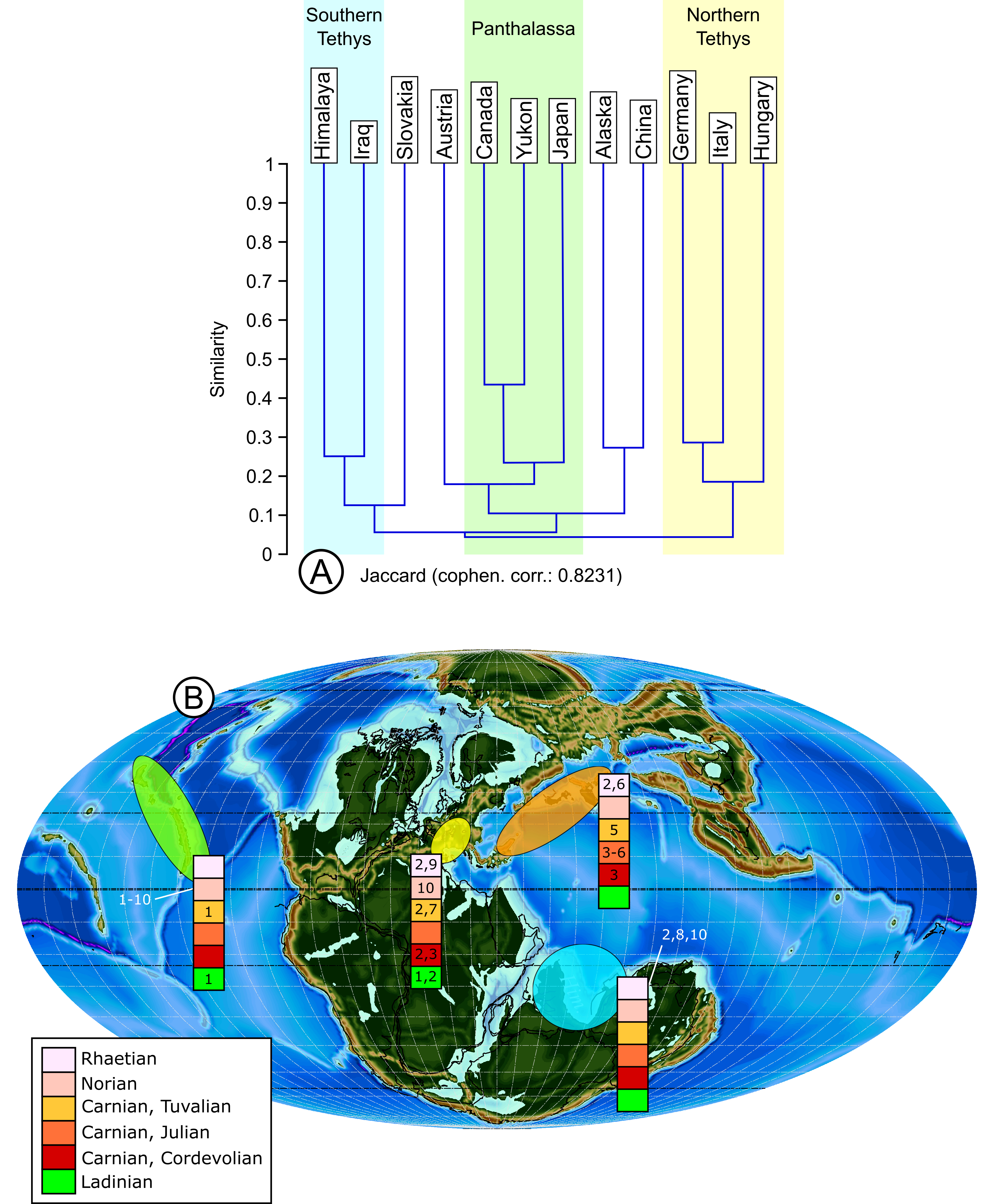OSTRACODS FROM THE LATE TRIASSIC (NORIAN) OF YUKON, CANADA: NEW TAXONOMIC AND PALAEOBIOGEOGRAPHIC INSIGHTS
DOI:
https://doi.org/10.54103/2039-4942/15439Keywords:
marine ostracods; Norian; Panthalassa; ostracod-algae association; palaeobiogeography.Abstract
The present work investigates the significance of Late Triassic ostracods from the Yukon Territory, Canada, and adds to the scientific knowledge of the taxonomy of these organisms during the Norian, which remain poorly documented and understood. Fifteen limestone samples representing distinct marine palaeoenvironments cropping out at Lime Peak, Stikinia terrane, provided 90 species, including 9 newly described: Alatobairdia? sohni n. sp., Bairdia aksala n. sp., B. taan n. sp., B. yukonensis n. sp., Cornutobairdia yukonella n. sp., Lobobairdia whitella n. sp., Mirabairdia canadia n. sp., Hungarella limella n. sp., Leviella riedeli n. sp. Most assemblages point to neritic conditions in the photic zone. A similarity analysis demonstrates the distinct composition of reef-related and algae-related ostracod assemblages. The ostracod-algae associations in Lime Peak reveal that the affinity of Bairdiidae for algae (Dasycladaleans in the case of Lime Peak) was already established in the Norian. A faunal link is identified during the Norian between eastern and western Panthalassa and Japan, in line with studies on other taxa. The flux of species between eastern Panthalassa and Tethyan areas appears very unbalanced in the Late Triassic with most migrations originating from the Tethys. Further data from other Middle and Upper Triassic Panthalassan localities and stages (i.e. Ladinian and Carnian) are needed to confirm whether this apparent trend is due to sampling bias or reflects real dispersal fluxes.

Downloads
Additional Files
Published
Issue
Section
License
Copyright (c) 2022 MARIE-BÉATRICE FOREL, NICOLO' DEL PIERO, SYLVAIN RIGAUD, ROSSANA MARTINI

This work is licensed under a Creative Commons Attribution-NonCommercial-NoDerivatives 4.0 International License.
The journal allow the author(s) to hold the copyright without restrictions.
Accepted 2021-11-03
Published 2022-03-30






